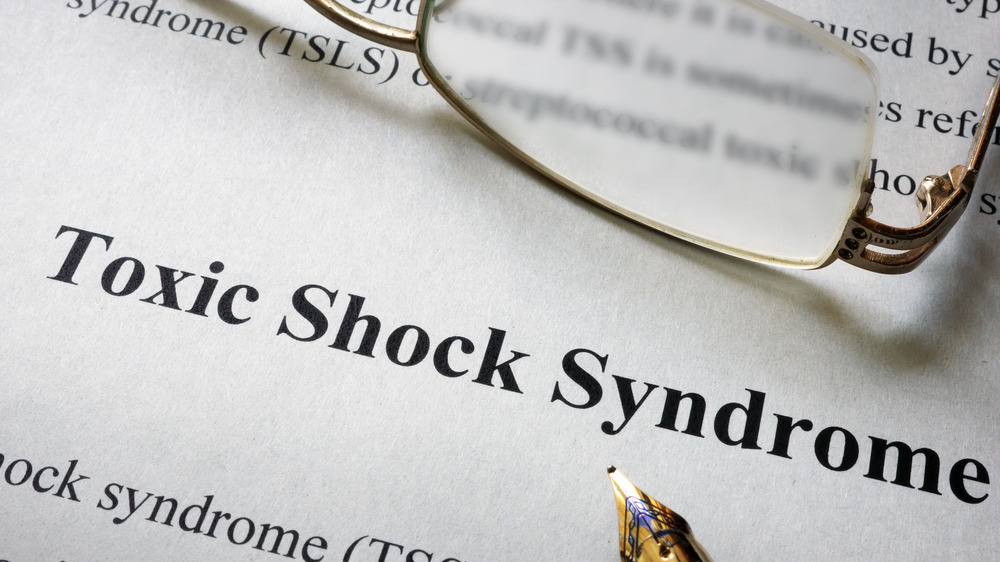What Is Toxic Shock Syndrome?
When people hear about toxic shock syndrome (TSS), the first thing that usually comes to mind is the use of superabsorbent tampons. However, there is much more to know about this rare but potentially life-threatening condition which can affect children, women, and men of all ages. Here's how to properly identify the signs and symptoms of TSS to ensure proper and timely diagnosis and management.
Robin Squellati, PhD, a certified nurse practitioner and faculty member for Walden University's MSN program, spoke to Health Digest exclusively about her experience diagnosing and treating TSS. Having practiced in Women's Health since 1995, Squellati maintains recognizing symptoms early is key: "I have seen cases of TSS first-hand. The women received treatment and had a good recovery. It is a condition where recognizing the symptoms and reporting what is happening is very important."
So what exactly is TSS? This serious but rare condition occurs when certain bacteria produce toxins that subsequently spread throughout the body, causing a variety of symptoms and affecting different organs. According to Squellati, the pathogens most commonly responsible for TSS are Staphylococcus aureus, Streptococcus pyogenes, and Clostridium sordellii. Signs and symptoms of TSS include high fever (greater than 102 degrees F), muscle aches, vomiting or diarrhea, and oftentimes, a diffuse rash resembling a sunburn. Additional varying symptoms include confusion, decreased urine output, and skin shedding particularly of the hands and feet (via John Hopkins Medicine). If TSS is not diagnosed quickly, "shock, renal failure and death can occur," Squellati explains.
Risk factors and treatment for toxic shock syndrome
In addition to bacteria associated with prolonged time between the changing of tampons or menstrual cups, other risk factors for toxic shock syndrome include recent surgery, recent bacterial or viral illness such as chickenpox or pneumonia, childbirth, and a weakened immune system.
If TSS is suspected, it is imperative to receive medical attention as soon as possible. Blood cultures and various blood tests are necessary to identify the causative pathogen of TSS and tailor your treatment. Once it's identified, Squellati says antibiotics are effective, stating that "Nafcillin and clindamycin are the most common for treating TSS caused by Staphylococcus. Since nafcillin is administered through an IV, people with TSS are hospitalized." She also emphasizes the importance of assessing potential liver or kidney damage, as these complications can be life-threatening. If there is a wound where the bacteria entered the skin, Squellati explains, it "needs to be cleaned and cared for to promote healing."
Squellati also urges people to be aware that even though "people are focused on COVID-19 right now, other infections are still occurring." Don't discount your symptoms and seek medical attention promptly if you believe you may have TSS.


